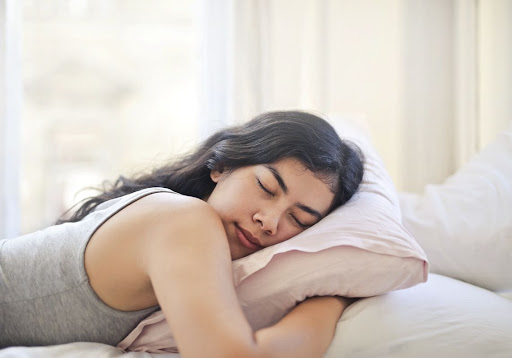We have all had the thought, “I’ll just catch up on sleep this weekend” or “Man, do I need some coffee this morning”. A good night’s sleep can be an underestimated tool in our health and recovery. The National Sleep Foundation recommends 7 or more hours a night for those between the ages 18-60.(1) That equates to about a third of our day, indicating a high level of importance.
Benefits from a good night’s sleep include decreasing pain, improving metabolism and digestion, memory benefits, and improved immune function.(2,3) A poor night’s sleep has been related to increased pain perception, anxiety, higher risk of obesity, cancer, heart disease, and stroke.(2,3) Sleep is like free medicine each night for the body.
Just like regular dental hygiene practices such as brushing and flossing promote healthy teeth, sleep hygiene consists of our daily habits and practices that we perform to support good sleep. Developing and practicing good sleep hygiene is key to ensuring regular nights of high quality and adequate rest. Below are some tips for developing better sleep hygiene so that you can wake up refreshed each day:
Daytime Tips
- Get moving! Daily movement or exercise of any type benefits our sleep, though the timing of exercise does matter, as exercise too close to bedtime may keep us awake.
- Get outside: Exposure to sunshine for at least 30 minutes a day helps regulate sleep patterns(2)
- Be mindful of daytime naps: Try not to nap after 3 pm and limit naps to 30 minutes or less(2)
Nighttime Tips
- Avoid alcoholic drinks, caffeine, nicotine, and large meals(2) two hours before bed as they may interfere with sleep.
- Keep room temperature cool, between 60-67 degrees.(2)
- Relax your body and drop your temperature: Taking a hot bath helps you relax and getting out of the tub drops body temperature to prepare the body for sleep.(2)
- Develop a wind-down ritual: 1 hour before bed stop screen time (phone, computer, TV), read, dim the lighting, listen to music, or wear a sleeping mask. (2)
- If you are having trouble falling asleep, and find yourself getting anxious or lying awake for more than 20 minutes, get up from bed and do something relaxing or walk around a bit.
- Stick to a schedule: keep the same time to sleep at night and up in the morning.(2)
Links Between Pelvic Pain, Prolapse, Pregnancy, and Sleep
Multiple studies have looked at the relationship of the pelvic floor to sleep. These studies have focused on pelvic pain, women with pelvic organ prolapse, and sleep during pregnancy. For example, a study conducted in 2014 found that 80% of women who experienced chronic pelvic pain also had poor sleep quality.(4)
A study on women with prolapse noted that 50% of these women struggled with poor sleep ratings. The women whose sleep was more affected were noted to be younger, have multiple other diagnoses, have nocturia (higher rates of bathroom usage at night), and have higher rates of depression.(5)
Another study focused on women during all months of pregnancy and gave them sleep quality questionnaires. The research found that 76% of women during pregnancy experienced poor sleep quality. There was no difference in the month of pregnancy for insomnia, sleep-disordered breathing, daytime sleepiness, and fatigue.(6)
All of these studies reflect that there are clear ties between pelvic floor function and sleep quality. They emphasize the importance of seeking treatment and informing your medical provider, such as PCP or Physical Therapist, if you are struggling with sleep issues or pelvic floor dysfunction.(4,5,6)
Achieving quality and sufficient sleep is an important part of our overall health, and the health of our pelvic floor. See if the sleep hygiene tips listed above make a difference for you!
References:
1. Hirshkowitz M, Whiton K, Albert SM, Alessi C, Bruni O, et al. The National Sleep Foundation’s sleep time duration recommendations: methodology and results summary. Sleep Health. 2015;1(1):40–43.
2. US Department of Health and Human Services. Your Guide to Healthy Sleep. National Institutes of Health, National Heart, Lung, and Blood Institute (2005) https://www.nhlbi.nih.gov/files/docs/public/sleep/healthy_sleep.pdf
3. Luyster, F. et al. (2012) Sleep: A Health Imperative. Sleep. June; 35 (6): 727-734
4. Cosar, E., et al (2014). Sleep disturbances amoung women with chronic pelvic pain. International Federation of Gynecology and Obstetrics. Sep; 126(3):232-4
5. Ghetti, C. et al (2014). Sleep quality in women seeking care for pelvic organ prolapse. Maturitas. Feb; 80 (2): 155-161.
6. Mindell, J.A, et al (2014). Sleep patterns and sleep disturbances across pregnancy. Sleep Medicine 16: 483-488.

